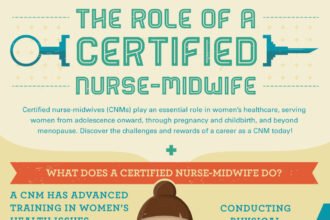With two short weeks to go before an unprecedented presidential election, healthcare continues to remain on the forefront. And while most of the focus has been on healthcare delivery for the Medicare population, there is reason to be very concerned about the future of the Medicaid program. According to the Kaiser Commission on Medicaid and the Uninsured, “Medicaid is the nation’s public health insurance program for low-income Americans. Currently, to qualify for coverage a person must not only be low-income but also must fit into specific eligi
With two short weeks to go before an unprecedented presidential election, healthcare continues to remain on the forefront. And while most of the focus has been on healthcare delivery for the Medicare population, there is reason to be very concerned about the future of the Medicaid program. According to the Kaiser Commission on Medicaid and the Uninsured, “Medicaid is the nation’s public health insurance program for low-income Americans. Currently, to qualify for coverage a person must not only be low-income but also must fit into specific eligibility categories. The Children’s Health Insurance Plan (CHIP) complements Medicaid by covering uninsured low-income children with family incomes above Medicaid thresholds. Many low income children, families, and people with disabilities would be uninsured without these programs.”
In an interesting development, the commission’s recent report noted that Medicaid enrollment and expense dropped in the year 2011. While on the surface, this appears to be a positive trend, additional probing might be warranted. Are the decreases in enrollment truly due to an improved economy stimulating job opportunities that now offer health insurance or have these individuals grown tired of being placed on a waiting list for one of the few available slots due to the diminishing number of participating physicians? And while select market leaders are experimenting with new and innovative delivery models, is this enough to account for the expense reduction? One remains hopeful that these efforts are not in vain, but could it simply be that fewer participants require less care? Or, have the hassles of being dropped from the program and repeating enrollment convinced recipients that it is much easier to access the emergency room for their healthcare needs?
Faced with the option of significantly reducing the number of uninsured through Medicaid expansion, a requirement of the Affordable Care Act (ACA), or maintaining the previous untenable expense for this population, states with the highest uninsured rates should be paying close attention. At the top of the list (33%) with a mere 30% of physicians accepting Medicaid, Texas, in particular, has a cross to bear. Factor in the fact that Governor Perry staunchly supports Medicaid expense reduction and has refused additional monies for expansion, one begins to wonder where will these people go to obtain care? In a vicious cycle, likely right back to the place they started, and often, the most expensive site of care. Given that safety net hospitals typically serve this patient population, these hospitals, in an unforeseen turn of events, are now positioned to lose millions in reimbursement.
So, how do we avoid this calamity? For the good news, recent Texas Medicaid policy actions have been driven the approval of a section 1115 waiver that expanded managed care, ended the former Upper Payment Limit payment methodology, and created two funding pools to help offset uncompensated care costs and encourage delivery system reform. Specifically, the Delivery System Reform Incentive Payment (DSRIP) program will be used to make incentive payments to encourage delivery system reform in four broad areas – infrastructure development, program innovation and redesign, quality improvements and population-focused improvement. Reform activities will be conducted by Regional Healthcare Partnerships (RHPs) that are financially anchored by a public hospital or local governmental entity; RHPs will collaborate with a variety of healthcare providers to evaluate current challenges in the delivery system and propose a course of action to address those challenges.
Not to sound like a broken record, but the DSRIP appears to be the perfect vehicle to test the advance practice nurse led medical home for children and low risk pregnant women. With more than one-half of Texas’ 1.2 million uninsured children eligible for enrollment in a public program, engaging them in a medical home would help to eliminate future lapse in coverage and unnecessary healthcare expense. Treating the total uninsured at a cost of $9.2B (in 2005 dollars), Texas also has the opportunity to reduce the unfortunate ramifications of passing this burden on to taxpayers in the form of higher hospital cost and insurance premiums. Irrespective of physician or NP direction, the “coordinated care organizations” model is currently being utilized to improve quality and remove cost for the Oregon Medicaid program – to the tune of $11B in projected savings by the end of the decade. In this model, hospitals, physicians, counties and community organizations will operate under a risk bearing model to integrate services, coordinate care and produce better outcomes at a lower cost. Not to be taken lightly, what appears to be a plain ol’ vanilla version of the medical home could prove truly revolutionary in its ability to broker public-private partnerships, leverage technology and galvanize the community for a truly collaborative experience.








